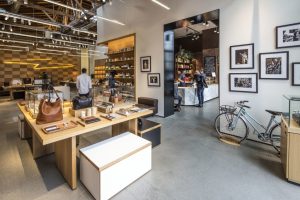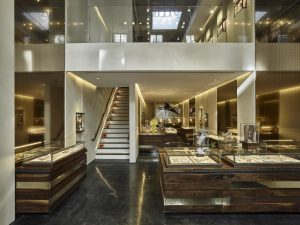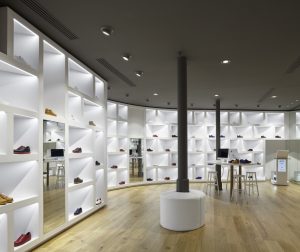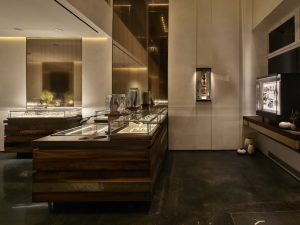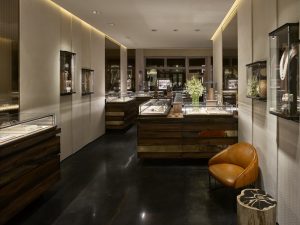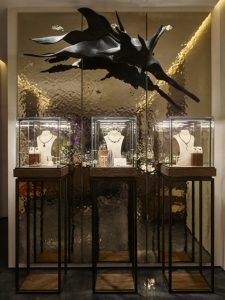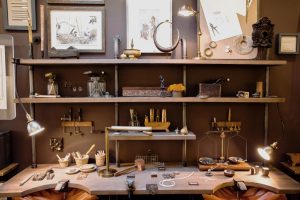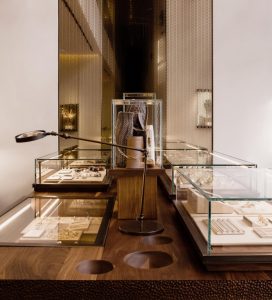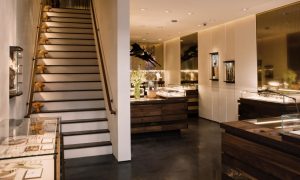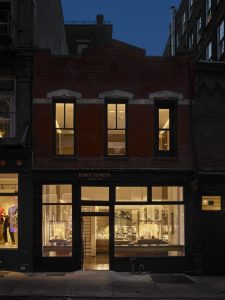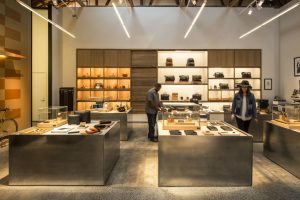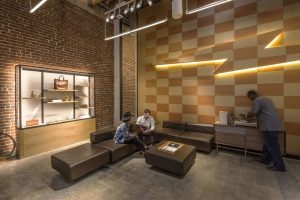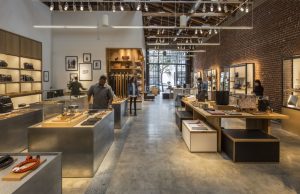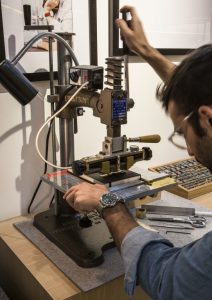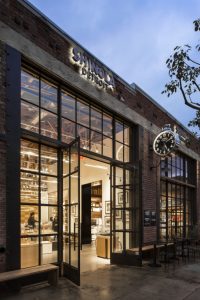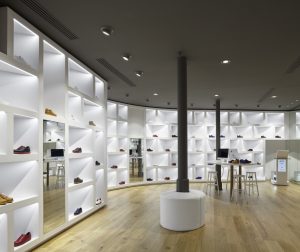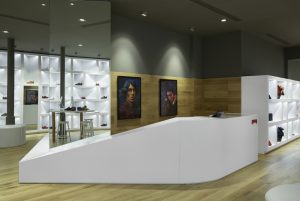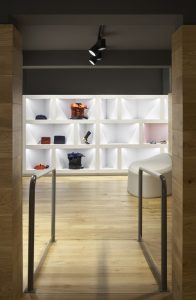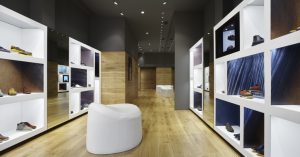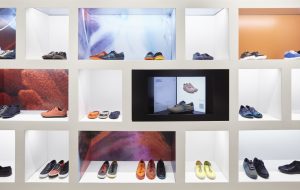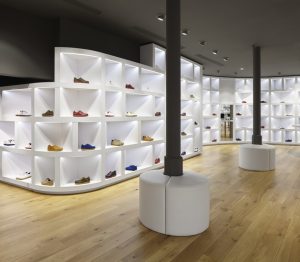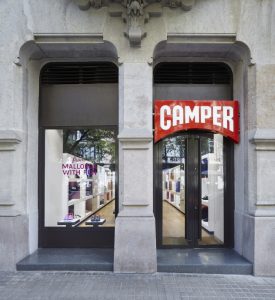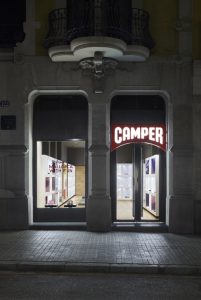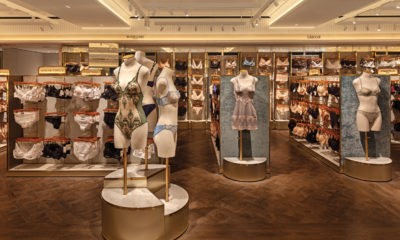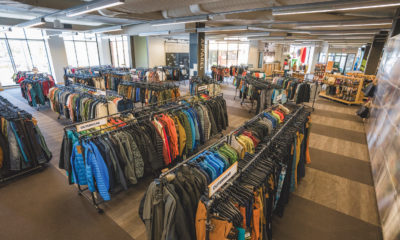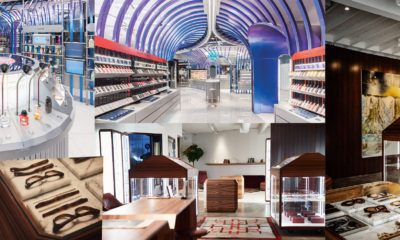Retailers today are defining themselves by the history and values that help tell their brand stories. And each story has its own unique delivery methods.
For John Hardy, the New York-based jewelry manufacturer founded in Bali, the story revolves around its unique pieces, which are handcrafted using Indonesian techniques. For handmade-shoe brand Camper (Majorca, Spain), it’s the 140-year-old story of artisanal fabrication using locally sourced materials. And for Detroit-based Shinola, which has revived the age-old shoe polish brand to create a line of fine timepieces and premium leather goods, it’s celebrating American craftsmanship and industrial prowess.
“Today, retailing is all about branding, and branding is all about storytelling,” says Danny Boddy, svp of retail for St. Louis-based Soft Surroundings (whose own story is about taking a relaxing, French-influenced journey through a calming, well-appointed store). “If you want customers to even come into your store, you’d better be able to tell your story. And you’d better have a story to tell.”
The challenge is to represent the brand story in the physical context of the store – including the way product is merchandised. In keeping with the trends, fixtures are becoming less about merchandise density and more about representing the brand.

Photography: Frank Oudeman, New York/Courtesy of Amuneal, Philadelphia
TALES OF THE SOUTH PACIFIC
John Hardy took a “hands on” approach in its new SoHo, New York, store so that its customers are transported when they touch a piece of its artisan handcrafted jewelry.
“The story of ‘touch’ is at the core of our decision-making,” says Maggie Zavolinsky, the company’s vp, creative services. “We’ve seen it happen when customers hold a piece of jewelry that’s very detailed and intricate. They appreciate the weight and craftsmanship.”
The treated black walnut casework has the glass-topped sleekness one would expect in a fine jewelry store, while the bases of the fixtures are layers of tactile, textured and hammered wood (also doubling as drawers). On top of each case is a jeweler’s magnifying glass and a carved-out sculptural nook containing the silver components used in the jewelry.
“People can’t resist scooping their hands in and picking up these little things,” says Zavolinsky. “We think it’s really important for people to be able to have this physical interaction and to understand what we mean by ‘handmade’ and ‘artisan-crafted.’ ”
Fixtures: Amuneal, Philadelphia. For a full list of project suppliers, please see below.

Photography: Henry Cabala, Los Angeles
A SHIFT FOR SHINOLA
The timepiece brand, which has expanded to leather goods and pet accessories, generally selects urban locations that attract other hip, trendy retail brands.
But its new store in Los Angeles’ Arts District, while in an edgy neighborhood, was a slight departure. For one thing, the store contains its own café and a tattoo parlor. Also, while the exterior of the building is urban funk, the interior is surprisingly sleek and open, and the fixtures exude elegance.
“That’s a specific intent on Shinola’s part to represent craftsmanship and quality,” says DaMarlon Carter, retail studio principal in Charlotte, N.C.-based Little’s LA office.
The fixtures are purposefully open, so the merchandise is easily accessible. “Shinola was trying for human engagement,” says James Farnell, creative director for Little’s brand experience studio. “To that extent, the fixtures are functional. Shinola’s customers are looking for greater depth in products and brands. They’re looking for well-constructed merchandise, but they also like the idea of knowing where the brand was sourced and the story behind who crafted it.”
Fixtures: Uhuru, New York. For a full list of project suppliers, please see below.

Photography: Sanchez Y Montoro, Spain
HAPPY CAMPER
Camper has worked with Kéré Architecture of Berlin to “pioneer new forms of retail shopping,” says Kéré Project Architect Adriana Arteaga. Its stores – like the new one on Barcelona’s historic La Rambla – are architecturally organic, with sweeping round or oblong walls. The merchandising is minimal, and shoe displays on the perimeter of the store act as much as visual pieces as they do merchandise presentations.
But Arteaga says the build-outs tell a specific story: “The handcrafted aesthetic of Camper is highlighted by using materials and processes that are indicative of shoe fabrication, such as braided cord and laminated wood,” she says. “In this way, an embedded company narrative can be perceived through a range of textures, colors, finishes, prints and graphics. Visitors are invited to shop, discover and interact, using a variety of senses.”
WHAT’S YOUR STORY?
“Merchants are being more thoughtful of the images they promote,” says Harry Steen, creative director of Minneapolis-based Supervalu. “Which means they first have to examine what their brand is, and then how to portray it.”
Steen says he’s seeing a lot of reclaimed wood fixtures, in part because it looks good, but also because it tells a story of sustainability and good planet citizenship.
But whatever materials retailers use to tell their stories, Steen says, the appearance, texture or purpose of their fixtures are geared toward a specific goal. “As today’s consumers are judging retailers’ online presence before they even come into the store, everyone’s trying to be much more thoughtful about what the brand is,” he says. “And that means, ‘How am I presenting who I am?’ ”
PROJECT SUPPLIERS
JOHN HARDY
Retailer
John Hardy, New York
Fixtures
Amuneal, Philadelphia
Design and Architecture
Design Republic, New York: Vincent Iacobellis, Inga Kruliene, Muiris Dore, Jessica Mazur, David Kim, Shahab Heidari
Outside Design Consultants
Lighting Workshop, New York
Fiskaa Engineering, New York
Flooring
Get Real Surfaces, New York
Furniture
Sancal, New York
Adrianna Agdamus, New York
Lighting
Ketra, Austin, Texas
Materials/Wallcoverings
Fabio Iuliano, New York
L’artigiano, New York
General Contractor
Michilli Inc., New York
Photography: Frank Oudeman, New York
SHINOLA
Retailer
Shinola, Detroit
Fixtures
Uhuru, New York
Architecture
Little, Newport Beach, Calif.
Design
Little, Newport Beach, Calif.
Gachot Studio, New York: Liana Cassel
Shinola, Detroit: Ryan Smith, brand architect
Outside Design Consultants
L’Observatoire Intl., New York (lighting)
Linwood Engineering Associates, Irving, Calif. (engineering)
General Contractor
Shawmut Design and Construction, Boston
Photography: Henry Cabala, Los Angeles
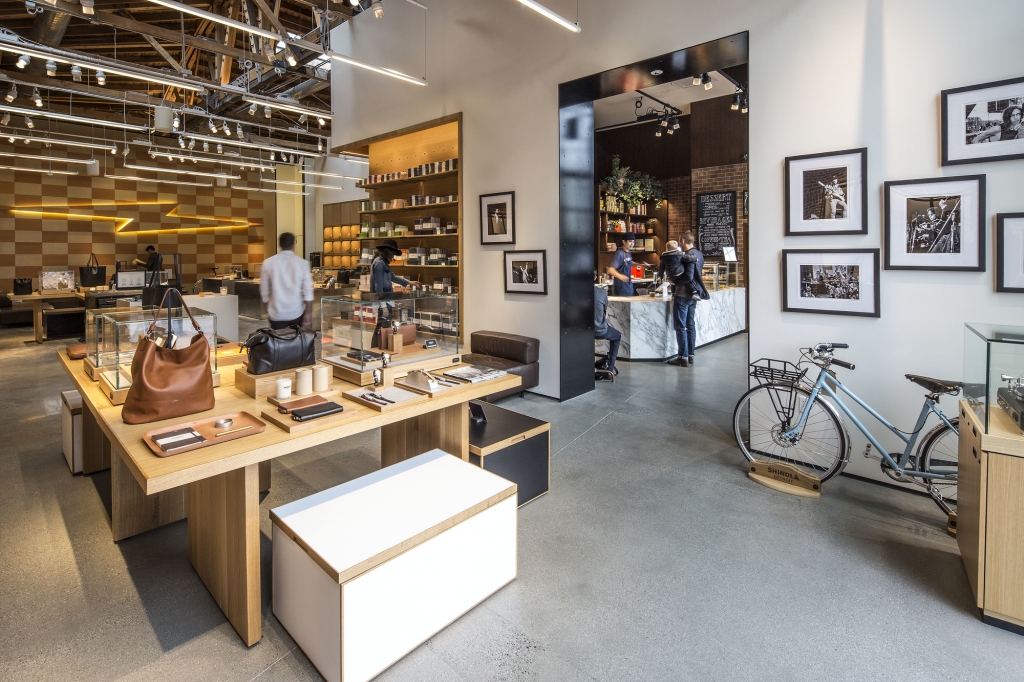

 Photo Gallery3 days ago
Photo Gallery3 days ago
 Headlines2 weeks ago
Headlines2 weeks ago
 Sector Spotlight2 weeks ago
Sector Spotlight2 weeks ago
 Headlines1 week ago
Headlines1 week ago
 Headlines5 days ago
Headlines5 days ago
 Headlines2 weeks ago
Headlines2 weeks ago
 Designer Dozen1 week ago
Designer Dozen1 week ago
 Headlines3 days ago
Headlines3 days ago



